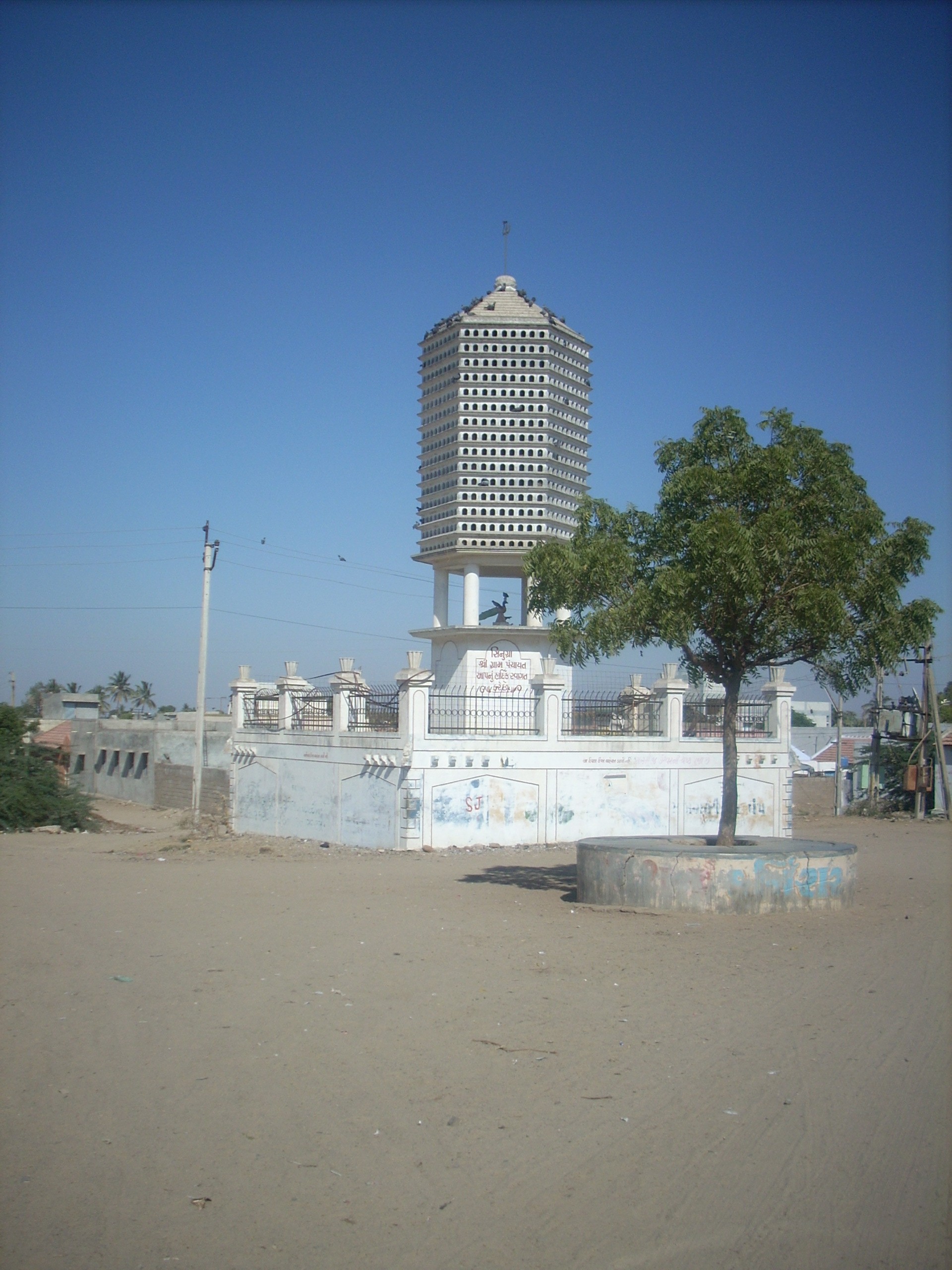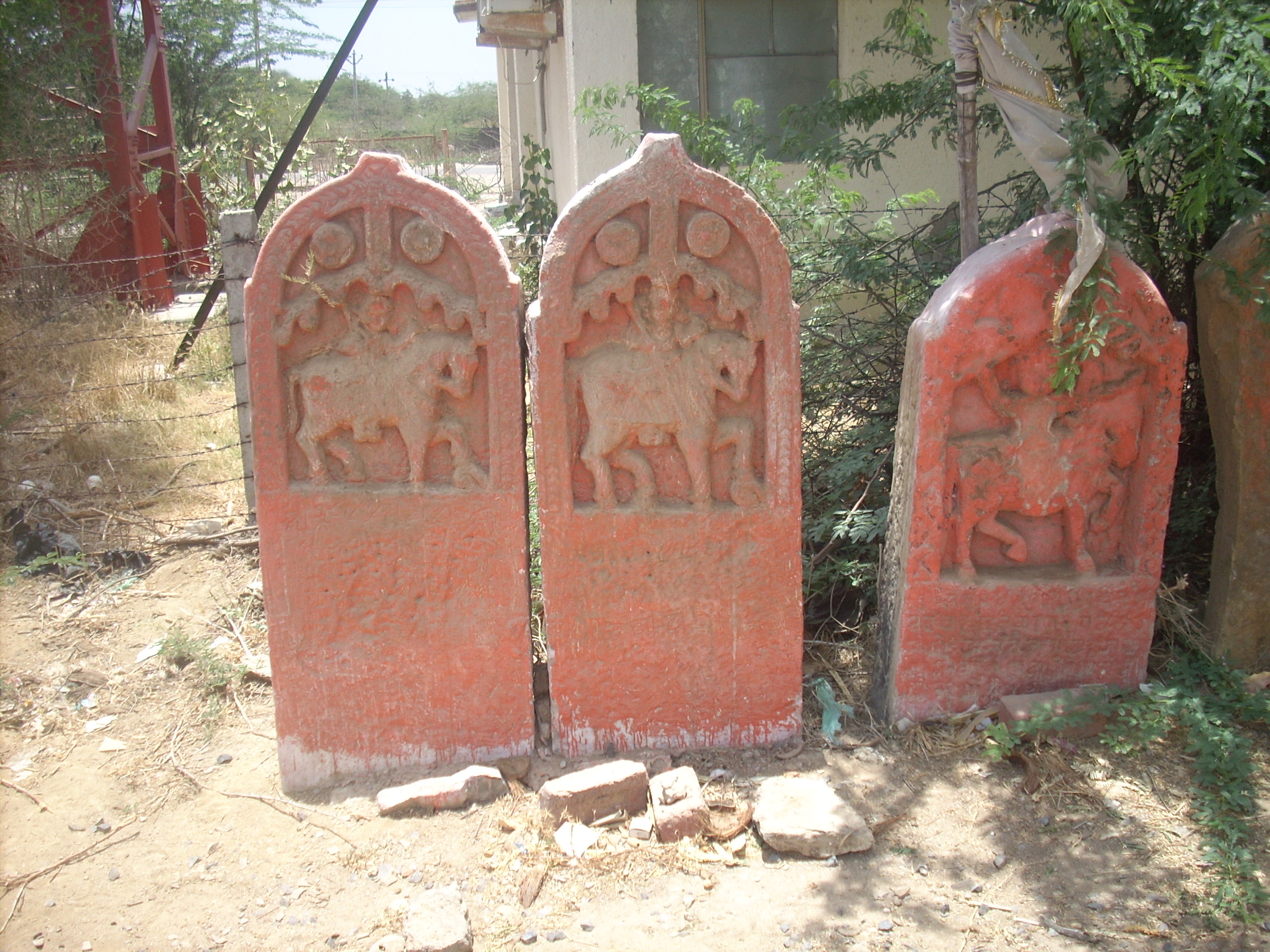|
Sinugra
Sinugra (also spelled Shinoogra / Sinogra / Sinougra) is a village 7 km from the town of Anjar, in the Anjar taluka of Kutch district in the Indian state of Gujarat. History The village is one of the eighteen villages founded by Mistris of Kutch in late 12th century. The Mistris of these villages have built and developed the infrastructure around the villages in late 1890. Geology There is a limestone mine which located across the hill named ''Topi dungar'' behind the Sinugra village. Also the Sang river, which rises from this hill behind village serves the water needs of village. The river flows through other parts of Anjar taluka. Heritage The village boasted of 200 odd houses made by rich Mistri families, ornate facades, intricate door carvings and metal grill windows and verandah depicting life of Queen Victoria. There were also huge wall and Ceiling paintings depicting scenes from Mahabharata & Ramayana. The village like other Mistri Village was well planned by Mis ... [...More Info...] [...Related Items...] OR: [Wikipedia] [Google] [Baidu] |
Jetha Lira Jethwa
Khora Ramji Chawda (1860–1923), better known as Seth Khora Ramji, was a reputed railway contractor, coal mines owner, banker and philanthropist of the early 20th century in India, who worked from Dhanbad and Jharia. Life-sketch He was born in the year 1860 in a small village called Sinugra in Cutch and belonged to small but enterprising Mestri community.Encyclopaedia of Bengal, Bihar & Orissa (1920) by British Gazetteer.-''Section : People from the region Life-sketch of Seth Khora Ramji Chawda''.Diary of Golden Days at Jharia – A Memoir & History of Gurjar Kashtriya Samaj of Kutch in Coalfields of Jharia – written by Natwarlal Devram Jethwa of Calcutta compiled by Raja Pawan Jethwa published in 1998 in English.He was one of the reputed Railway Contractors of his times and his exploits were mentioned by British authorities. He is also credited by them to be the first Indian to break monopoly of Europeans in Jharia coalfields. He established his first Colliery name ''Khas Jh ... [...More Info...] [...Related Items...] OR: [Wikipedia] [Google] [Baidu] |
Seth Khora Ramji Chawda
Khora Ramji Chawda (1860–1923), better known as Seth Khora Ramji, was a reputed railway contractor, coal mines owner, banker and philanthropist of the early 20th century in India, who worked from Dhanbad and Jharia. Life-sketch He was born in the year 1860 in a small village called Sinugra in Cutch and belonged to small but enterprising Mestri community.Encyclopaedia of Bengal, Bihar & Orissa (1920) by British Gazetteer.-''Section : People from the region Life-sketch of Seth Khora Ramji Chawda''.Diary of Golden Days at Jharia – A Memoir & History of Gurjar Kashtriya Samaj of Kutch in Coalfields of Jharia – written by Natwarlal Devram Jethwa of Calcutta compiled by Raja Pawan Jethwa published in 1998 in English.He was one of the reputed Railway Contractors of his times and his exploits were mentioned by British authorities. He is also credited by them to be the first Indian to break monopoly of Europeans in Jharia coalfields. He established his first Colliery name ''Khas Jh ... [...More Info...] [...Related Items...] OR: [Wikipedia] [Google] [Baidu] |
Mistris
Kutch Gurjar Kshatriya (also known as Mistri or Mestri) are a minority Hindu and one of the Socially and Educationally Backward communities of Gujarat in India, who claim to be Kshatriyas. They are an artisan community related with Kadia works. They are also known as the Mistri or Mistris of Kutch.Mistri Encyclopaedia of Backward Castes By Neelam Yadav Page 316. History [...More Info...] [...Related Items...] OR: [Wikipedia] [Google] [Baidu] |
Mistris Of Kutch
Kutch Gurjar Kshatriya (also known as Mistri or Mestri) are a minority Hindu and one of the Socially and Educationally Backward communities of Gujarat in India, who claim to be Kshatriyas. They are an artisan community related with Kadia works. They are also known as the Mistri or Mistris of Kutch.Mistri Encyclopaedia of Backward Castes By Neelam Yadav Page 316. History [...More Info...] [...Related Items...] OR: [Wikipedia] [Google] [Baidu] |
Chabutro
Chabutro, also spelled as chabutaro or chabutra, is a structure found mostly in India. They are a tower-like structure with pentagonal- or octagonal-shaped enclosures at the top. In the upper enclosure are several holes, where birds can make their nests. In Gujarat, chubatros are constructed at the entrances villages, especially for the use and breeding of pigeons; similar monuments are found in village centers or at village entrances in the Gujarat & Kutch. At the base of the structure a sitting platform is usually made, with the surrounding area of this structure serves as a gathering place for villagers and as a playing area for children. Another type of chabutro, found in Gujarat & Rajasthan, have a different design and are built only to feed and let birds rest, but not intended for breeding purposes. The upper enclosure of such chabutras are artistically carved and designed like a window found on domes, called Chhatri. 'Chabutro' vaguely translates to "pigeon tower" or " ... [...More Info...] [...Related Items...] OR: [Wikipedia] [Google] [Baidu] |
Anjar, Gujarat
Anjar is a town, tehsil, township and municipality of the Kachchh district in the state of Gujarat, India. Founded in 650 AD, Anjar is a culturally diverse town of historic importance in the region. It is home to several historic religious temples, including the Jesal-Toral Shrines built in honour of a fourteenth century couple, whose lives inspired works of art and cinema. The town was devastated by several earthquakes, including the 1819 Rann of Kutch earthquake and 2001 Gujarat earthquake. In recent years, Anjar has become a hub of manufacturing activity. History The foundation and early history of the town is unclear, due to a lack of written evidence and documentation. Popular folklore suggests a group of settlers led by Ajay Pal Chauhan (also called Ajepal) – the brother of the king of neighbouring Ajmer – arrived in Anjar in 650 AD (Samvat, Samvat 707). Soon after, Ajay Pal devoted his life to asceticism after his Chauhan clan was defeated by Muslim Rajputs. At differ ... [...More Info...] [...Related Items...] OR: [Wikipedia] [Google] [Baidu] |
Sang River
The Sang river is the name of a river which drains through Anjar taluka of Kutch, Gujarat, India. It rises from the hills behind a small village named Sinugra near Anjar. It flows by villages like Nagalpur, Anjar, Galpadar and Kharirohar. The total length of the river is 29 km. The river drains into the Arabian Sea at Nakti Creek in the Gulf of Kutch The Gulf of Kutch is located between the peninsula regions of Kutch and Saurashtra, bounded in the state of Gujarat that borders Pakistan. It opens towards the Arabian Sea facing the Osman Gulf. It is about 50 km wide at the entrance bef .... References {{Reflist Rivers of Gujarat Geography of Kutch district Rivers of India ... [...More Info...] [...Related Items...] OR: [Wikipedia] [Google] [Baidu] |
Chamunda
Chamunda (Sanskrit: चामुण्डा, ISO-15919: Cāmuṇḍā), also known as Chamundeshwari, Chamundi or Charchika, is a fearsome form of Chandi, the Hindu Divine Mother Shakti and is one of the seven Matrikas (mother goddesses).Wangu p.72 She is also one of the chief Yoginis, a group of sixty-four or eighty-one Tantric goddesses, who are attendants of the warrior goddess Parvati.Wangu p.114 The name is a combination of Chanda and Munda, two monsters whom Chamunda killed. She is closely associated with Kali, another fierce aspect of Parvati. She is identified with goddesses Parvati, Kali or Durga. The goddess is often portrayed as residing in cremation grounds or around holy fig trees. The goddess is worshipped by ritual animal sacrifices along with offerings of wine. The practice of animal sacrifices has become less common with Shaivite and Vaishnavite influences. Origins Ramakrishna Gopal Bhandarkar says that Chamunda was originally a tribal goddess, worshipp ... [...More Info...] [...Related Items...] OR: [Wikipedia] [Google] [Baidu] |
Taunk
Taunk also spelled Taank / Tank/ Tak is a surname found in people and diaspora of Indian sub-continent. Apart from India the usage of last name is largely in found in diaspora in USA and UK. The last name is found largely among communities of North West Indian States like Gujarat, Rajasthan, Punjab, Haryana. People with surname *Ashk Ali Tak (born 1956), Indian politician, member of the Rajya Sabha representing Rajasthan *Suresh Tak (born 1962), Indian politician, member of the Rajasthan Legislative Assembly *Saawan Kumar Tak Saawan Kumar Tak (9 August 1936 – 25 August 2022) was an Indian film director, producer, and lyricist. He directed many Hindi films, including successful films like ''Saajan Bina Suhagan'', ''Souten'', '' Souten Ki Beti'', ''Sanam Bewafa'', ' ... (born 1936), Indian film director References {{Reflist Surnames of Indian origin Indian surnames ... [...More Info...] [...Related Items...] OR: [Wikipedia] [Google] [Baidu] |
Kuldevta
A kuladevatā (), also known as a kuladaivaṃ, is an ancestral tutelary deity in Hinduism and Jainism. Such a deity is often the object of one's devotion ('' bhakti''), and is coaxed to watch over one's clan (''kula''), gotra, family, and children from misfortune. This is distinct from an '' ishta-devata'' (personal tutelar) and a grāmadevatā (village deities). Male kuladevatas are sometimes referred to as a kuladeva, while their female counterparts are called a kuladevi. Etymology The word ''kuladevata'' is derived from two words: ''kula'', meaning clan, and ''devata'', meaning deity, referring to the ancestral deities that are worshipped by particular clans. Veneration The deity can be represented in a male or a female human, an animal, or even an object, like a holy stone. It is believed that rituals done at a kuladeva/kuladevi temple benefits all those genetically connected with the one performing the ritual. Kuladaivams of the Shaiva tradition are often consid ... [...More Info...] [...Related Items...] OR: [Wikipedia] [Google] [Baidu] |
Anjar Taluka
Anjar may refer to: *Anjar, Gujarat, a town and municipality in Gujarat, India *Anjar, Iran, a village in East Azerbaijan Province, Iran *Anjar, Lebanon Anjar (meaning "unresolved or running river"; ar, عنجر / ALA-LC: ''‘Anjar''; also known as Hosh Mousa ( ar, حوش موسى / ''Ḥawsh Mūsá''), is a town of Lebanon located in the Bekaa Valley. The population is 2,400, consisting alm ..., a town in the Bekaa valley of Lebanon See also * Anjan (other) {{geodis ... [...More Info...] [...Related Items...] OR: [Wikipedia] [Google] [Baidu] |
Limestone
Limestone ( calcium carbonate ) is a type of carbonate sedimentary rock which is the main source of the material lime. It is composed mostly of the minerals calcite and aragonite, which are different crystal forms of . Limestone forms when these minerals precipitate out of water containing dissolved calcium. This can take place through both biological and nonbiological processes, though biological processes, such as the accumulation of corals and shells in the sea, have likely been more important for the last 540 million years. Limestone often contains fossils which provide scientists with information on ancient environments and on the evolution of life. About 20% to 25% of sedimentary rock is carbonate rock, and most of this is limestone. The remaining carbonate rock is mostly dolomite, a closely related rock, which contains a high percentage of the mineral dolomite, . ''Magnesian limestone'' is an obsolete and poorly-defined term used variously for dolomite, for limes ... [...More Info...] [...Related Items...] OR: [Wikipedia] [Google] [Baidu] |






